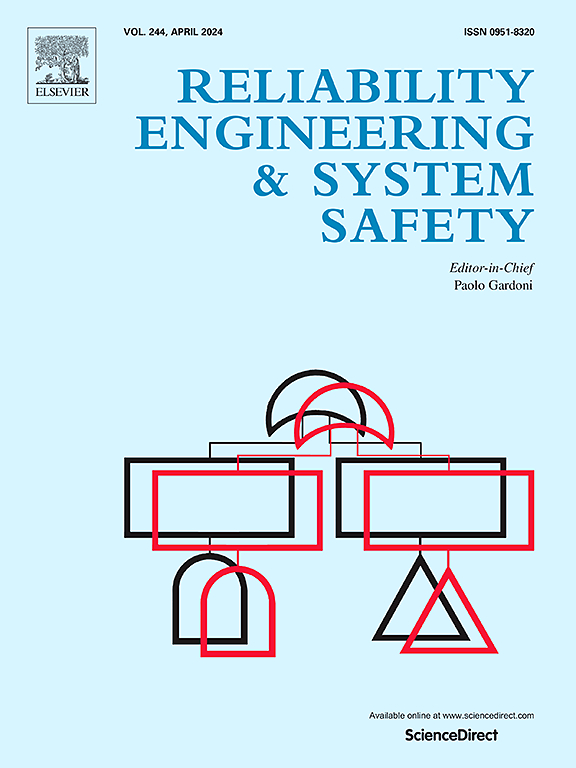A full domain decision model for robust risk control based on minimum linkage space and copula Bayesian networks
IF 9.4
1区 工程技术
Q1 ENGINEERING, INDUSTRIAL
引用次数: 0
Abstract
To effectively manage the complexity and risks inherent in rail transit operations, we propose a robust three-stage decision model. This model integrates a full-domain decision system, minimum linkage space, three-way clustering, and a Copula-Bayesian approach to create a comprehensive framework for data analysis and risk management. In the first stage, we establish a full-domain decision system that maps operational processes to specific risk characteristics, facilitating a unified approach to data interlinkages. The second stage combines minimum linkage space with a three-way clustering algorithm to identify the major risk factors from 25 potential risks, focusing on those crucial to system integrity. The final stage combines Copula theory and Bayesian networks to model and analyze in detail the dependencies and interrelationships among the 13 major risk factors identified. By utilizing advanced analytical tools, such as scatter plots, percentile spider charts, and correlation coefficients, we identify critical risk factors that significantly affect rail transit safety. This enables precise, predictive, and diagnostic interventions to enhance real-time risk assessments, ultimately reducing system risks and preventing accidents. The model provides actionable insights for managing complex risks in rail transit, offering a valuable tool for decision-makers to ensure safer operations.
基于最小链接空间和联结贝叶斯网络的鲁棒风险控制全域决策模型
为了有效管理轨道交通运营中固有的复杂性和风险,我们提出了一个稳健的三阶段决策模型。该模型整合了全域决策系统、最小关联空间、三向聚类和 Copula-Bayesian 方法,为数据分析和风险管理创建了一个综合框架。在第一阶段,我们建立了一个全域决策系统,将业务流程映射到具体的风险特征,从而促进了数据相互联系的统一方法。第二阶段将最小关联空间与三向聚类算法相结合,从 25 个潜在风险中识别出主要风险因素,重点关注那些对系统完整性至关重要的因素。最后阶段结合 Copula 理论和贝叶斯网络,对已确定的 13 个主要风险因素之间的依赖关系和相互关系进行建模和详细分析。通过利用散点图、百分位蛛网图和相关系数等先进的分析工具,我们确定了对轨道交通安全有重大影响的关键风险因素。这样就能进行精确的预测和诊断干预,加强实时风险评估,最终降低系统风险并防止事故发生。该模型为管理轨道交通中的复杂风险提供了可行的见解,为决策者确保更安全的运营提供了宝贵的工具。
本文章由计算机程序翻译,如有差异,请以英文原文为准。
求助全文
约1分钟内获得全文
求助全文
来源期刊

Reliability Engineering & System Safety
管理科学-工程:工业
CiteScore
15.20
自引率
39.50%
发文量
621
审稿时长
67 days
期刊介绍:
Elsevier publishes Reliability Engineering & System Safety in association with the European Safety and Reliability Association and the Safety Engineering and Risk Analysis Division. The international journal is devoted to developing and applying methods to enhance the safety and reliability of complex technological systems, like nuclear power plants, chemical plants, hazardous waste facilities, space systems, offshore and maritime systems, transportation systems, constructed infrastructure, and manufacturing plants. The journal normally publishes only articles that involve the analysis of substantive problems related to the reliability of complex systems or present techniques and/or theoretical results that have a discernable relationship to the solution of such problems. An important aim is to balance academic material and practical applications.
 求助内容:
求助内容: 应助结果提醒方式:
应助结果提醒方式:


